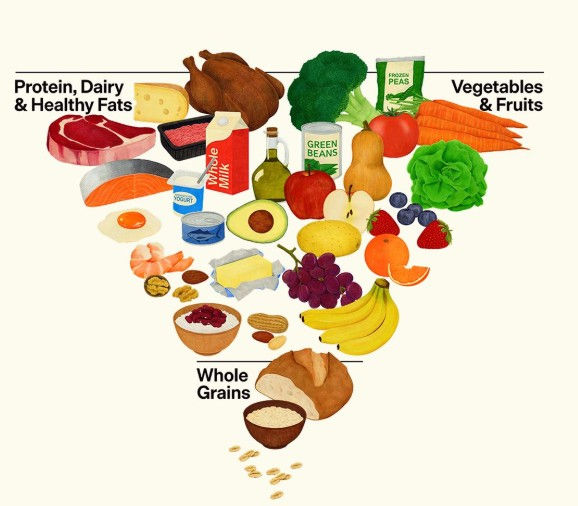PhotoDynamic Therapy (PDT) and Low Level Light Therapy (LLLT):
- The Bioregulatory Medicine Institute

- Aug 30, 2021
- 3 min read
Updated: Mar 4, 2024
Two different, yet powerful forms of light therapy
Dr. Marlene Siegel

All mammals are light beings, designed to take in various wavelengths of light in order for the biological pathways to function optimally. In this context, light is a nutrient for the body!
The visible light spectrum (red, orange, yellow, green and blue,) along with ultraviolet and infrared produced by the sun (which are in the non-visible range,) not only have tremendous therapeutic benefits, but are essential for life! When we are exposed to natural sunlight, we are absorbing all these wavelengths. The problem arises with our modern day lifestyles, where we and our fur babies spend most of the day indoors, literally creating a “light deficiency.”
PhotoDynamic Therapy, (PDT) was discovered at the beginning of the 20th century. It was FDA approved mostly for use in dermatology and a little in oncology. In 2005 the use of intravenous laser therapy was approved.
PDT combines light (of a specific wavelength,) light sensitive substance (photosensitizers like Vit C and Curcumin which are taken orally or intravenously,) and oxygen to stimulate the production of Reactive Oxygen Species (ROS) that are in turn lethal to abnormal cells.
In Low Level Light Therapy, (LLLT,) light is absorbed by endogenous cellular photosensitizes (they exist inside the cell) such as cytochromes, flavins, porphyrins and NADH.
Light wakes up the enzymes that drive metabolic pathways. Light changes the reactive chemistry of the blood, causing blood to react in a way it would not have done without the light. There is an increase in enzyme activity (active enzymes are much more effective than non-active ) which helps trigger the immune system to repair and perform a variety of metabolic functions.
Antibiotics only have an effect on bacteria. Antibiotic resistance is becoming a crisis due to the overuse of antibiotics and it is predicted that in 20 years, antibiotics will be worthless. Antibiotics are nondiscriminatory, negatively affecting all bacteria, even the beneficial ones. One round of antibiotics can negatively impact the gut microbiome. All antibiotics take time to become therapeutic and they cannot travel into tissue with a poor blood supply, not to mention the severe negative side effects that can result from their usage.
PDT (unlike antibiotics) is effective against fungi, parasites, virus and bacteria. It is safe, effective, and there is no danger of developing resistance. PDT is able to penetrate into tissues that are damaged or lack good blood circulation and the effects are immediate.
Skin is a barrier to lower light frequencies like blue, green and yellow. The melanocytes absorb the energy, not allowing light to pass into the deeper tissue. When light is given intravenously, it interacts directly with the blood components and the light energy is delivered by the blood cells. When light is applied to an area where the skin is missing (such as in the case of trauma), PDT bypasses the melanocytes and is absorbed by the tissues with topical application.
The top 10 Benefits of PDT and LLLT using various color frequencies include:
The light stimulus gives a cellular signal affecting the chemical behavior, metabolism, movement of cellular products and gene expression. All associated enzymes and/or proteins are affected with this cascading effect rippling across the entire cell.
Dissociation of Nitric Oxide from the lining of blood vessels, leading to vasodilation and improved circulation.
Blue light has an antibacterial and antifungal effect.
The anti-viral effect is most interesting as the therapy reduces viral load and the virus fragments that are created stimulate the immune system, acting as an “autogenous vaccine”.
Improves redox potential- improving chemical signaling between the microbiome and the mitochondria for enhanced communication.
Targeted effect against abnormal cells, especially when combined with photo activators.
Light enhances all 3 phases of detoxification in the liver. Phase 1 and Phase 2 transform toxins from fat soluble to water soluble, then toxins are excreted in phase 3.
Through the cells’ innate intelligence, light will trigger an inflammatory response that calls in anti-inflammatory chemistry, or bring in more immune cells, depending on what is needed.
Blue, green and UV light stimulate glutathione production. Glutathione is the master antioxidant made by the body.
Light improves the body’s ability to remove/inactivate toxins and reduce inflammation letting the genes improve their expression.
The current medical model (for people and pets,) focuses on identifying symptoms of disease. Once named, organisms are “blamed” and a pharmaceutical is prescribed. But what if we have the model wrong? What if the real problem lay with the terrain not being able to support the beneficial organism that are required to run the biological pathways?
When we practice medicine by supporting and being in cooperation with the body’s innate intelligence, we will see a dramatic improvement to health and longevity.
Dr. Marlene Siegel

Founder of Pasco Veterinary Medical Center www.pascovet.com
Founder of S’Paws Family Wellness coming in 2022
Founder of transformingvetmedicine.com
Founder of EvoLoveRaw.com
Dr. Marlene Siegel
DrMarleneSiegel.com pascovet.com EvoLoveRaw.com



